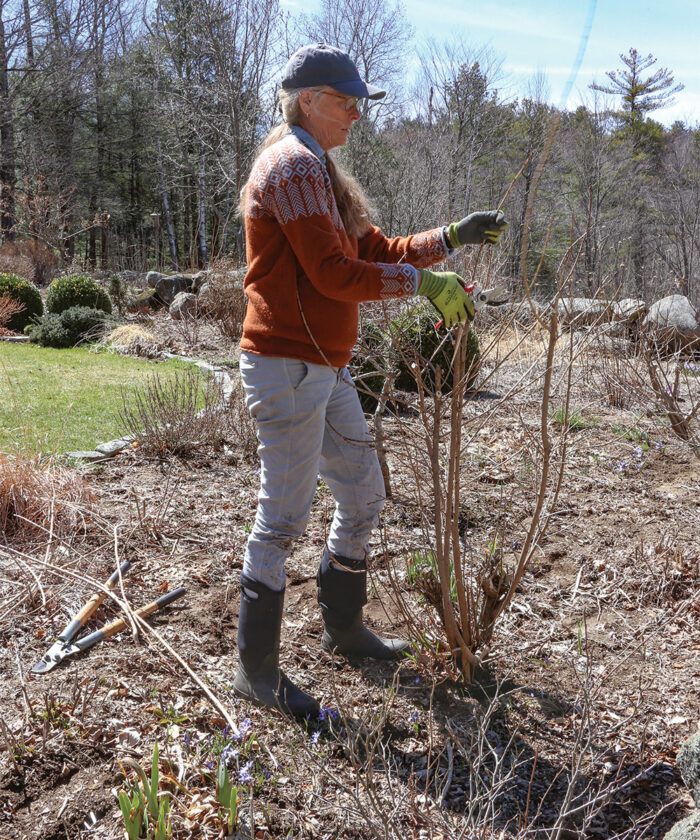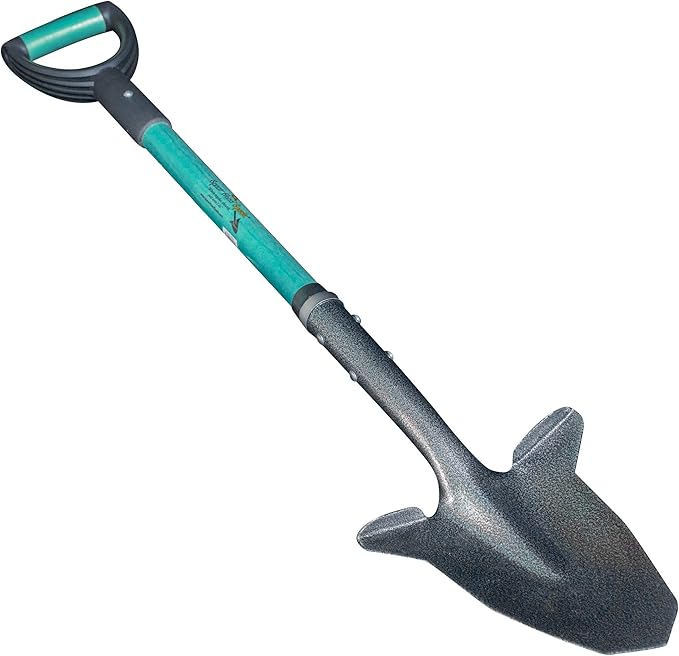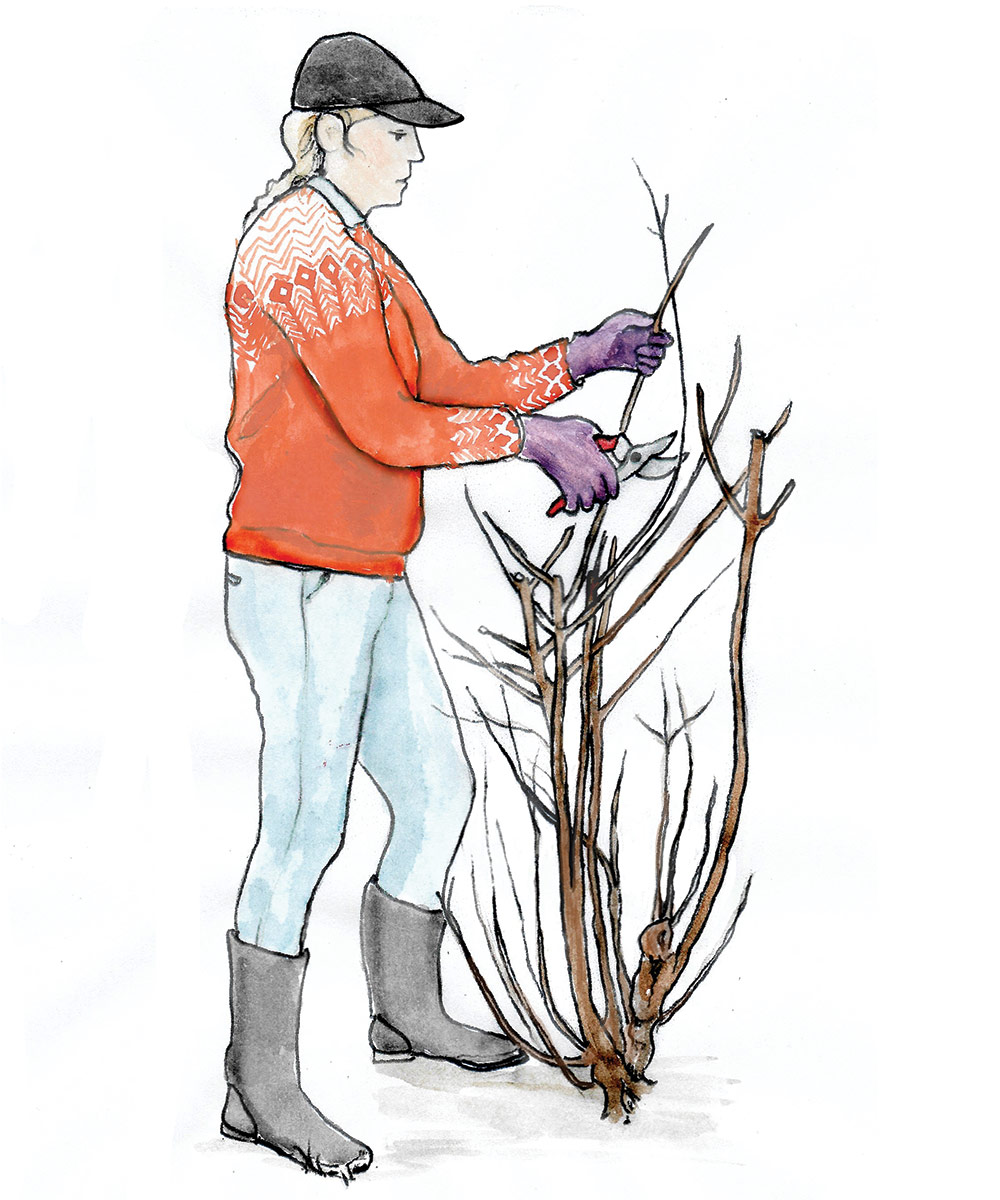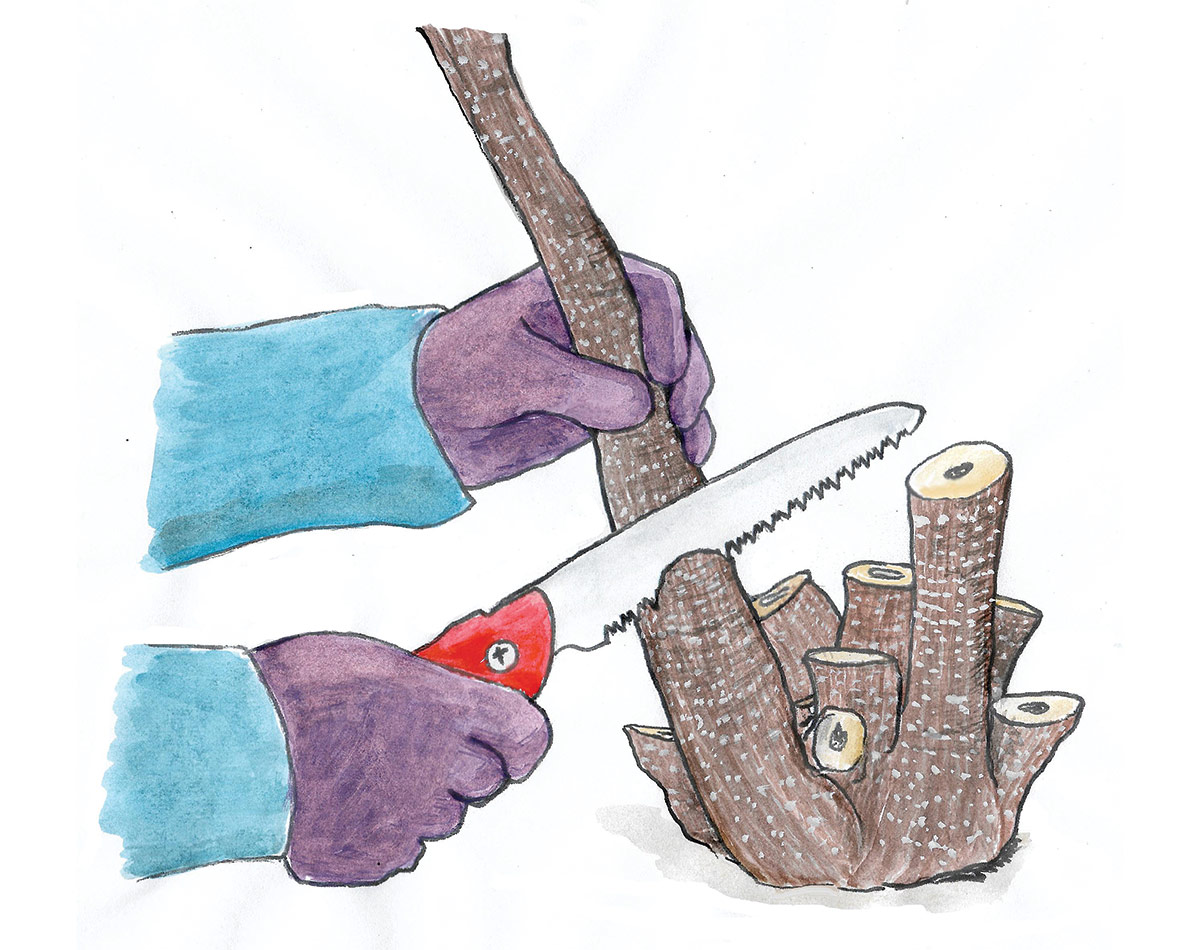
Coppicing is an age-old practice in which a tree or shrub is cut to the ground or almost to the ground. This severe cutback stimulates the root system to produce abundant new growth, which often has larger, more colorful foliage. Coppicing is a useful method for controlling a tree or shrub’s size and shape, but the downside is that flowers are forfeited. The best time to coppice is in early spring, when you start to see tiny shoots on the stems. This is a sign that active growth is starting.
Vigorous growers can be cut back hard each spring
Certain shrubs and trees are naturals for coppicing, responding quickly with new and dramatic growth. For example, I can cut ‘Grace’ smokebush back to 1 foot above the ground each spring, and the new growth will mature to 10 feet by the end of summer. Yellow catalpa is another fast grower. If cut to about 2 feet above the ground, it will grow at least 8 feet tall and wide by the end of summer.
Cut slower-growing shrubs less severely
Shrubs that are unable to rebound quickly after heavy coppicing will benefit from a gentler pruning session. For example, ‘Golden Spirit’ and ‘Royal Purple’ smokebushes can only put out about 3 feet of new growth in a season, so it’s best to cut them back by just a few feet in spring. They respond to this light coppicing by pushing out larger and more brightly colored foliage than they would if they were left to grow naturally.
Some plants can be cut to the ground in either autumn or spring
I cut princess tree down to its stump in fall because I don’t want to look at its gangly bare branches all winter. This aggressive grower responds equally well to being coppiced in fall or spring and may also be trimmed back a bit in midseason if needed. Princess tree has invasive tendencies in warmer climates, but in this northern garden a yearly cutback is sufficient to prevent it from setting seed.
Laura Trowbridge is a garden designer based in Peterborough, New Hampshire.
Photo and illustrations: Carol Collins
Fine Gardening Recommended Products

Spearhead Shade Gardening Shovel with Steel-Reinforced Fiberglass Handle
Fine Gardening receives a commission for items purchased through links on this site, including Amazon Associates and other affiliate advertising programs.

Fiskars 28" Power-Lever Garden Bypass Lopper and Tree Trimmer
Fine Gardening receives a commission for items purchased through links on this site, including Amazon Associates and other affiliate advertising programs.

DeWit Spring Tine Cultivator
Fine Gardening receives a commission for items purchased through links on this site, including Amazon Associates and other affiliate advertising programs.






















Comments
check this for save money https://www.savewithblogs.com/
nice blogs very informative.check this for save money https://www.savewithblogs.com/
Log in or create an account to post a comment.
Sign up Log in